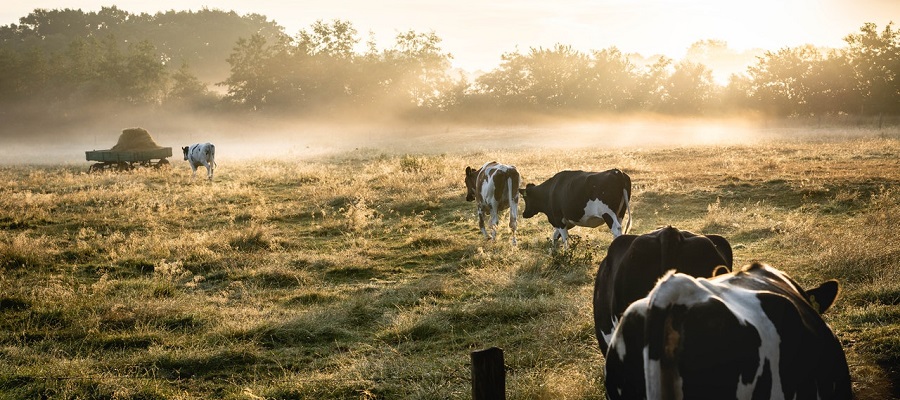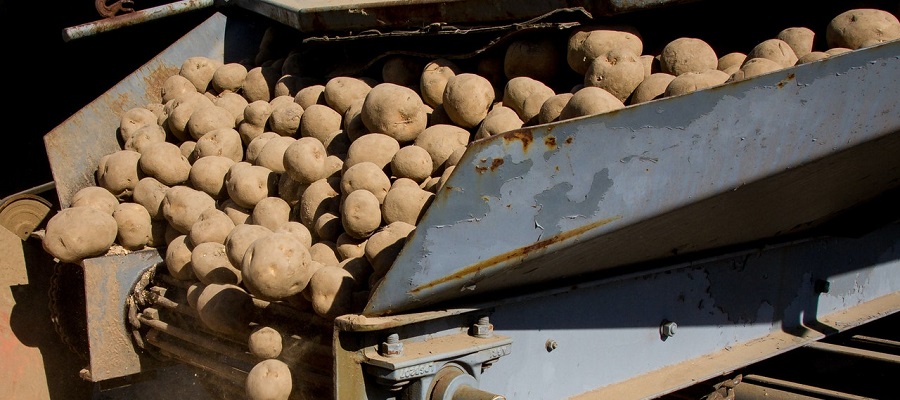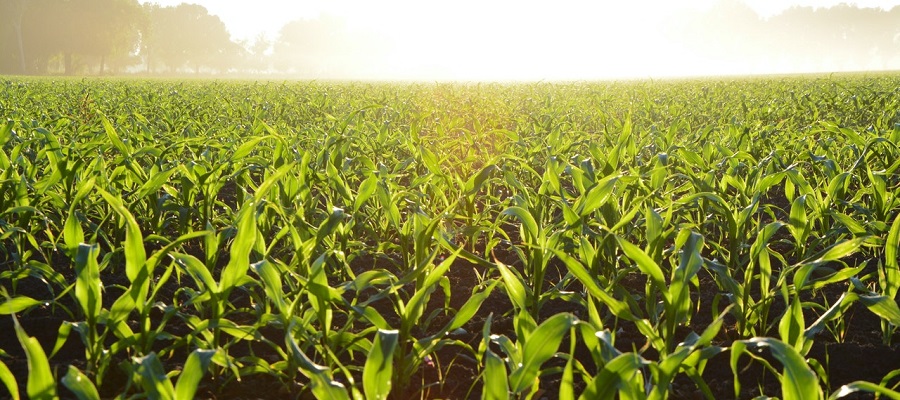Cattle farming
Brazil is the world's third-largest beef producer behind the U.S. and the EU, with total production of 7.77 million tons in 2005. The country is the world leader in exports. Annual exports reach 2.3 million tons. This is more than Australia and Argentina combined, which occupy second and third place in the ranking list, exporting 1.9 million tons. Every third kilo of beef exported worldwide is "Made in Brazil."
In the first half of 2006, Brazilian beef exports totaled US$1.7 million. This is a new record and represents an increase of 16.24% compared to 2005.
The main buyer of Brazilian beef is Russia, followed by Egypt, the Netherlands, Italy, the United Kingdom, Bulgaria and Algeria.
Higher export quotas are currently still blocked by tariff and non-tariff trade barriers. The import tariff for Brazilian meat to the European Union is currently up to 170 percent. Current negotiations between the EU and Mercosur (Argentina, Brazil, Paraguay and Uruguay) aim to reduce these trade barriers within the framework of a free trade area.
The balance of power on international markets has shifted significantly in recent years. Brazil and Argentina in particular have greatly expanded their beef production and are increasingly pushing onto the world market. They now account for almost half of total world trade between them. Similarly, China has seen a huge increase in beef production. In contrast, European production is declining.
Brazil has significant cost advantages in beef production. Extensive grazing of cattle adapted to the climatic conditions allows efficient production at lower costs. A Brazilian cow is ready for slaughter after an average of two years. The cattle grow up on extensive grassland, which is reflected in the quality of the meat. BSE is not an issue. However, recent outbreaks of foot-and-mouth disease (FMD) in limited areas of the states of Mato Grosso do Sul (MS) and Paraná (PR) may somewhat mitigate further export growth, as MS accounts for about half of all Brazilian beef exports. 56 countries now imposed an embargo.
In 2005, the total cattle population in Brazil was 192 million head. Among these, Nelore cattle are the most widely distributed breed, with over 100 million head.
Meat breeds in Brazil
Zebu of the Nelore breed dominate in extensive meat production. Taurine breeds are Simmental, Hereford, Angus and other meat breeds. Crossbreeding is common, with Simmental x Nelore or Brahman x Angus being particularly popular. On some farms, several breeds are crossed to the robust meat type preferred there and bred on as a cross breed. Probably the vast majority of extensive meat production farms keep their own bulls for natural reproduction.
Nelore cattle
Nelore cattle are originally descended from the Indian zebu. It has a pronounced hump over the shoulder and neck (cupim) and is one of the cattle breeds with the longest ears. The long legs help to walk and graze in swampy areas. The Nelore cattle can adapt well to different climates. The thick, black skin is covered with white to light gray fur that filters and reflects harmful sun rays. This breed is extremely heat tolerant, undemanding and has a natural resistance to various parasites and diseases. Furthermore, it is very fertile, easy calving and has a strong maternal instinct. Brazil is the world's largest breeder of Nelore cattle, with a herd of over 100 million head.
Hereford
The Hereford is a medium-framed beef breed that is highly adaptable to extreme climatic conditions. Other characteristics such as ease of calving, low calf mortality, economical use of roughage, high fertility with long life, good handling and best meat quality due to marbling and fine fibers have contributed to the fact that Hereford is the most widespread beef cattle breed in the world (especially in North and South America, Australia, New Zealand and South Africa). Hereford cattle are raised primarily in the temperate zones of the South.
Simmental cattle
The Fleckvieh is an adaptable dual-purpose breed with equal emphasis on milk and meat production. The annual milk yield is about 5100 kg. It is widespread in Europe, North and South America, China. South Africa etc. For the tropics a form with dark pigmented eye rings is bred.
Canchim
The Canchim is a beef cattle bred in central Brazil from Indian Zebu (Bos taurus indicus) and European Charolais (Bos taurus taurus). It combines the high performance of European cattle with the zebu's adaptation to hot climates.
Limousion
The Limousin is a first quality, low maintenance beef cattle and is often used for crossbreeding. This breed is suitable for all climates and is distributed in a total of over 40 countries worldwide, including especiallyFrance, Brazil, Argentina and Australia.
Brahmans
The American Brahman was bred from four different Indian breeds: the Guzerat, Gir, Nellore and Krishna. Characteristic of Brahmans is the hump over the shoulder and neck, and the loose skin flaps on the neck. Bulls can weigh up to 1100kg, cows up to 700kg. They have more sweat glands and an oily skin to repel insects. They are also resistant to parasites and diseases and combine characteristics of strength, hardiness, heat tolerance and calm temperament, which makes them suitable cattle for tropical and subtropical countries. Distribution: USA and about 60 countries in the tropics and subtropics.
Diseases
Extensive grazing in Brazil results in animal losses from botulism, rabies, and plant poisoning. Tuberculosis and brucellosis are common. Infestation and transmission of diseases by parasites as well as anaerobic infections occur predominantly in young animals. Government control programs and seasonal vaccination for all animals exist only for foot-and-mouth disease. As a result, the risk of introduction during animal purchases is very high.
Traceability
The export of Brazilian beef is subject to some hurdles such as health requirements and commercial restrictions. One measure to meet the health requirements is the development of traceability systems, which are already largely standard in other countries, ensuring maximum food safety and product quality. Since July 15, 2006, all beef exported to the EU must be registered through the Brazilian Identification System Bovina e Bubalina of the Ministry of Agriculture and Livestock (Ministério da Agricultura e Pecuária - Mapa).
In order to ensure the efficiency of this mechanism, it is first of all necessary to equip the individual animals with identification technology. This can be done manually by ear tags, metal tags or necklaces, or by electronic microchips that are either attached to the tags or placed subcutaneously. Recently, biometric identification is being encouraged in the country, where the vascular pattern of the retina is scanned as a unique identifier.
In order to monitor all stages of the production process, data such as date of birth, origin, breed, day of slaughter, husbandry method and information on compliance with environmental and animal welfare standards are recorded. Another fundamental issue of food safety is the question of disease control, primarily following outbreaks of foot-and-mouth disease and BSE or mad cow disease. The Brazilian authorities are trying to introduce some norms in food production that determine that traceability and identification will follow systematic and established rules, guaranteeing the required information regarding the product.
The people responsible for the verification, collection and storage of the data are the certifiers. These companies have their own databases, with information about each client, the agricultural land and the animals. The certifiers are in direct contact with the Ministry of Agriculture, which in turn has a central database where a national register of all producers and certifying companies is kept. Furthermore, within the traceability program, there is an archive in which each animal that is in the with a single serial number is electronically recorded.
Meanwhile, there is some confusion about the distribution of responsibilities. That is, who introduces the certificate, who monitors and certifies it. In any quality program, introduction, monitoring and certification should be carried out by separate bodies. Furthermore, the poor information of cattle breeders and skilled workers hinders the process of registration. Many have not yet understood why they should list the information about their farms. In addition, there is a lack of facilities for training and links with universities and research centers. For these reasons, beef traceability in Brazil is still in its infancy and has several hurdles to overcome.
Pig farming
The pig population in Brazil currently amounts to about 33 million animals. Production is particularly concentrated in the southern states of Rio Grande so Sul, Santa Catarina and Paraná. In 2005, pork production was about 3.1 million tons with an export volume in 2004 of 598,000 tons valued at nearly US$800 million. The country is the fourth largest exporter with 14 percent market share of world pork exports. Russia is the main market for Brazilian pork. In the first half of 2005, nearly 179,000 tons were imported into Russia.
History of pig farming in Brazil
Before 1950, pigs were produced in Brazil only to provide animal fats for food production and preservation. As the market for animal fats began to decrease, due to the replacement by vegetable oils, a process of genetic improvement began in breeding.
In the 1970s, new production technologies were introduced, which contributed to the modernization of Brazilian pig production. From this period on, Brazilian pig production was characterized by two production categories, in which the original rural breeds (Piau, Canastra and others) were used for fat production, and the breeds improved by breeding (Duroc, Large White, landrace crosses) for meat production. With the introduction of the genetics improvement program, pig production gained more quality and initiated an incentive for further development especially in the south of the country.
Feed accounts for the majority of costs in pig production, about 65%. Since feed rations consist of grain mixtures, pig production sites are usually located next to larger arable farming sites. The genetic improvement companies are mostly national companies that operate as an oligopoly due to the high cost of research and development.
Most of the pig production in the South is organized through vertical integration with the processing industry. In the states of Rio Grande do Sul and Santa Catarina, it is estimated that up to 80% of production comes from integrated farms. Within these closed systems, there is a centralization of all stations of the production process, such as production, rearing, slaughter, processing and trade. Since the meat of the slaughtered animals is processed industrially in the south of the country, large animals with a slaughter weight of 105 to 120 kg are preferred here. Pig production in the other regions supplies local markets with fresh meat, which is why the slaughter weight here is lower at 80 to 105 kg per animal.
The genetic material in Brazil comes from Europe and the USA, and in recent years practically all the major breeding companies have established operations in Brazil. Currently, the breeds used are mainly Large White, Landrace, Duroc and Pietrain, and cross hybrids are used in most of the commercial farms.
Artificial insemination has expanded in Brazilian pig breeding in recent years. However, less than 20% of pig production comes from artificial insemination. Due to the difficulties in semen conservation, there are few insemination stations and importation is practically not feasible. Most of the companies that use artificial insemination build their own stations. Brazil's leading companies in industrial pig production are Sadia, Perdigão, Aurora and Seara. They all have a similar organizational structure and operate in a concentrated, extremely competitive environment.
Report TopAgrar 2005
Barra do Piraí, Fazenda Taquara: "The second mainstay of the farm is pig farming, total herd 2,400 pigs, currently with 3.18 Reais/kg live weight the best prices of the last 8 - 10 years (sow herd in Brazil 2003 reduced by 600,000 animals!), in addition low feed costs. Profit currently approx. 120 reais per pig. 2000/2001 was a critical period due to expensive feed and low pig prices). 3 fattening houses for 230 pigs each with 40 - 50 cm thick mattress made of wood shavings. Remaining pig fattening in 2 double-row litterless open pens (25 - 30 pigs/pen) with flat pen floors, trough feeding, nipple drinkers, manure removal with "water flushing". Slurry storage tank 400 m3. Feed mixture of purchased components (60% corn, 35% soy, 5% minerals). Feed conversion ratio 1:3 (270 kg of feed for a 90 kg pig). 290 sows (increase to 500 sows planned), kept in holding pen in crate stalls. Farrowing pens partially perforated with metal grates and farrowing lamps, liquid manure channels, pipe manure with accumulation system. No artificial insemination. Until 2003 pregnant sows kept in pasture with hutches (farrowing due to excessive sunlight and temperatures above 40° C). Now 24 piglets/sow/year (2.2 litters x 11 piglets), with 5 - 8 % very low losses due to 24 hour sow shift. Weaning after 21 days, little medication (cost issue among others). Piglet rearing on fully perforated plastic floors with 60 piglets/pen, automatic feeders, nipple drinkers. Two-row pen with sloping floor to center slurry channel, flat decks placed 40-50 cm high, gravity ventilation. All accruing piglets are self-fattened, slaughter weight 90 - 95 kg, crossbred sows (Large White x Landrace) x Dalland boars. Own slaughterhouse, thus eliminating the middleman. Monthly 400 - 430 pigs are slaughtered, half sale and blood sausage production."
Poultry farming
The total chicken population in Brazil is about 1.1 billion head. Chicken meat production is close to 9 million tons, and egg production is 1.6 million tons. This makes Brazil the world's third largest producer of chicken and its products, and the largest exporter of chicken meat, with 43% market share. The meat is mainly produced in the states of São Paulo, Paraná, Goiás, Minas Gerais, Rio Grande do Sul and Santa Catarina. The poultry industry is highly mechanized and develops between cooperatives of local farmers and large farms.Brazil's cost advantage in poultry production lies in its low labor costs. In addition, the country benefited greatly from the reduction of trade restrictions and export subsidies agreed upon in the WTO negotiations. Further production advantages are offered by modern technologies, the large and fast growing local market, as well as the occasionally strong devaluation of the Brazilian currency in recent years.
Production
Poultry production can be divided into the following stages: genetic selection, production of breeding stock and chicks, rearing and fattening, slaughter and marketing.
Genetic selection consists in producing a strain of individuals with desirable characteristics of weight, sexual maturity, fertility, food conversion, slaughter age, etc. This station of the production process requires high, long-term investments. Only a few companies in Brazil are active in this field. They are in contact with international organizations.
In the production of breeding animals, hybrid animals are produced with generation of the grandparents and parents. The grandparents come from the reproduction of the strain of the genetic selection process and are usually imported from Europe or the USA. They in turn produce the breeding animals that are used as parents for the commercial production of young chickens. This step is part of the vertical production system and only a few companies are involved in it. The third step is the rearing and fattening of the chicks on the chicken farms to produce the chickens. In this segment, there is intense cost control as a result of the large consumption of feed, medicines and specialized labor. The trend here is toward decentralized production with a large number of smaller integrated producers. After fattening, slaughtering and further processing for commercial distribution takes place. An estimated 20% of production is exported and 80% is sold on the domestic market.
The slaughterhouses in the south, which are part of the large business groups in the region, control the flow of production along the entire production chain within an integrated system. They receive the chickens from the farms according to their needs. These groups commercialize the processed products. It requires high investments in marketing strategies, advertising, brand names, intermediaries, purchases, etc. The largest companies are: Sadia, Perdigão, Macedo, Frangosul and Doux.
Feed costs represent up to 70% of the total production costs of poultry rearing. The feed is mainly composed of corn and soybean meal, which explains the development of the sector close to production sites that produce these products.
The traditional picture, in which commercial poultry production was based on small and medium-sized farms raising chickens for the large, processing industries, has now changed. Newer houses now have capacities of 24,000 chickens, with automatic feeding and controls for temperature, humidity and light. There are clear cost savings in this sector due to mass production. The future trend is towards a processing industry that works with a smaller number of large-scale producers.
Technology
The expansion and consolidation of poultry production has been brought about by the spread of cutting-edge technologies in the fields of genetics, feeding, husbandry, health and equipment. The good performance of chicken products is conditioned by a constant decrease in input prices and/or profits due to increased efficiency in the production chain.
Traceability
In the poultry and pork sectors, there is not yet a national law that requires traceability, but the major export companies have their own systems that take into account the requirements of international markets. All Brazilian chicken meat exported to Europe must be tested for nitrofen residues. [Nitrofen is a herbicide, and belongs to the group of selective herbicides used mainly in pre-emergence. Since 1988, there has been a complete ban on distribution and use in the EC, and the general maximum level for nitrofen residues in food is 0.01 mg/kg food.
Another trade barrier for Brazilian poultry meat, is the legalization of transgenic soy in the country, as soy makes up part of the chicken's diet. This could result in losses in the export of chicken meat, as the EU does not accept transgenic products and has now introduced labeling for genetically modified feed in addition to the more stringent labeling for genetically modified food.


